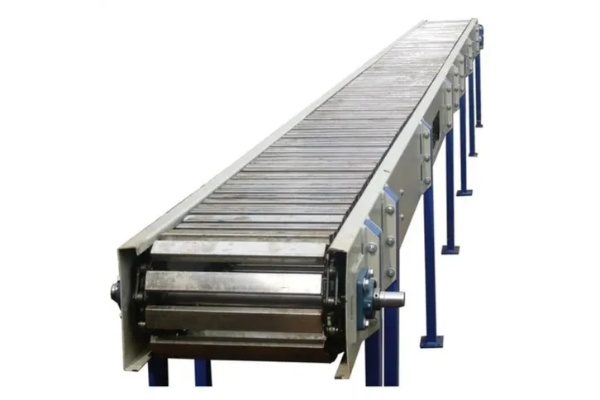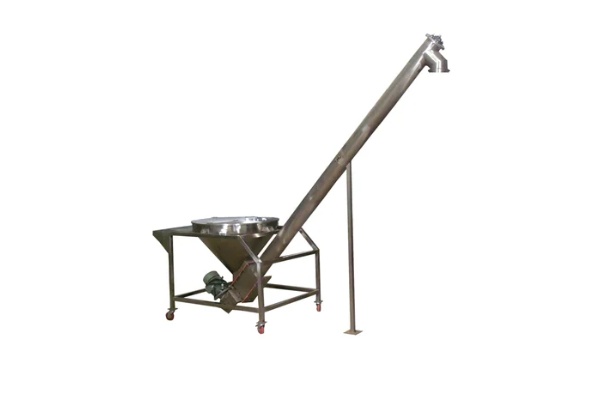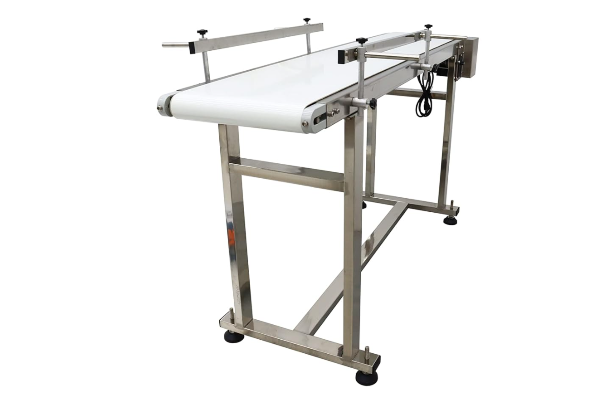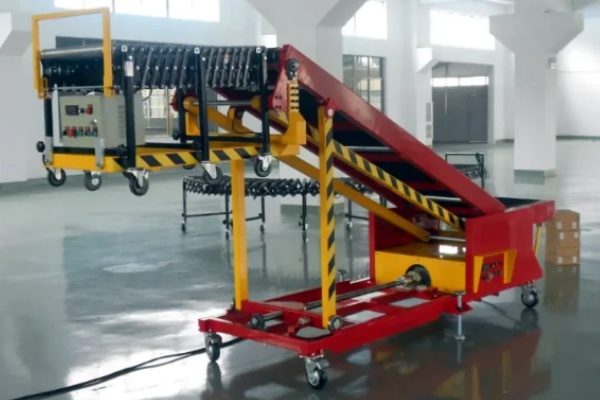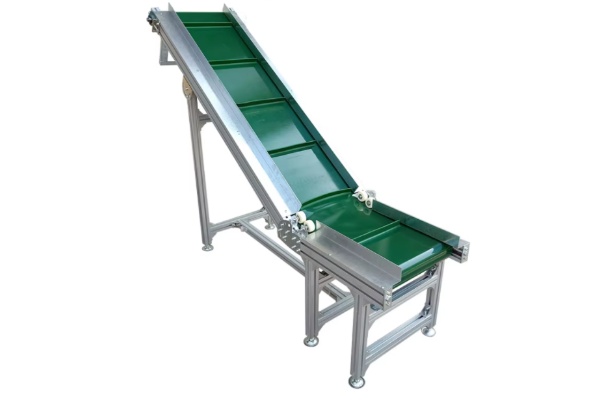
Waste Belt Conveyor for Plastic Bottle
The price of Waste Belt Conveyor for Plastic Bottle ranges from $100 to $6,000, depending on the model, size, conveying capacity, and material.
Voltage: 110V/220V/380V
Frame Material: Carbon Steel Stainless Steel 304/316
Capacity: 50-200kg
Belt material: PVC PU Rubber
Speed: 10-30m/s (adjustable)
Belt width: 0.25m/customized
What is Waste Belt Conveyor for Plastic Bottle?
Waste Belt Conveyor for Plastic Bottle is an industrial equipment used to transport waste plastic bottles. Its main function is to smoothly transport large quantities of irregularly shaped plastic bottles from one location to another for subsequent processing. According to their conveying angles and structural characteristics, common types of this type of conveyor belt include horizontal conveyor belts that move materials on the same horizontal plane, inclined conveyor belts for changing the height of materials, and L-shaped, Z-shaped or combined conveyor belts that combine horizontal and inclined paths to adapt to complex spatial layouts.
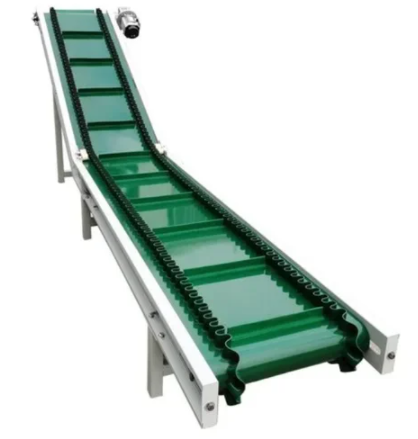
Choosing a suitable Waste Belt Conveyor for Plastic Bottle is the key to the operation of the plastic recycling line. When selecting a model, it is necessary to comprehensively consider the characteristics of the waste, the processing volume, the site restrictions and the budget. First of all, it is necessary to clarify the type. Common types of conveyors include horizontal belt conveyors, inclined belt conveyors, climbing belt conveyors, etc. Secondly, the width, length and running speed of the conveyor will affect its conveying capacity. The material of the conveyor belt is also important. Plastic bottle waste may contain moisture, dust and even a small amount of oil, so it is crucial to choose a wear-resistant, corrosion-resistant and easy-to-clean PVC or rubber conveyor belt. In addition, it is also necessary to consider the frame material (carbon steel or stainless steel, the latter is more corrosion-resistant and suitable for humid environments), drive mode (motor power and reducer type) and safety protection (emergency stop, anti-deviation device, protective cover, etc.).

What are the types of Waste Belt Conveyor for Plastic Bottle?
According to the specific processing requirements and site conditions of plastic bottle waste, conveyor belt types with different angles can be selected or combined to design a suitable conveying solution. According to the conveying angle, Waste Belt Conveyor for Plastic Bottle can be mainly divided into the following types:
Features of horizontal conveyor belts: This conveyor belt runs in a straight line on the same horizontal plane, and the height of the material does not change. It relies on the friction between the conveyor belt and the plastic bottle waste to move the material forward smoothly. It is usually necessary to install higher side baffles (skirts) or side guardrails on both sides of the conveyor belt to prevent it from scattering or rolling out of the conveying range. The surface of the conveyor belt can be plain or with a slight pattern to increase friction.
Features of inclined conveyor belts: Inclined conveyor belts run up or down at a certain angle to change the conveying height of the material. The material needs to be "carried" uphill or "carried" downhill by the conveyor belt, and at the same time, it must be prevented from rolling back or sliding due to gravity. Inclined conveyor belts can be specially designed to ensure the stability and continuity of transportation, such as high side baffles (skirts). Or transverse baffles are fixed at equal intervals on the surface of the conveyor belt to prevent them from sliding down or rolling down when tilted.
Features of L-type / Z-type / combined conveyor belts: This type combines horizontal conveying sections and inclined conveying sections, connecting conveying paths at different angles through corners or transition sections to form L-shaped, Z-shaped or other more complex conveying layouts. The design of the transition section needs to have a smooth transition arc, appropriate side guards or guides to prevent plastic bottles from piling up, getting stuck or falling when the angle is changed.
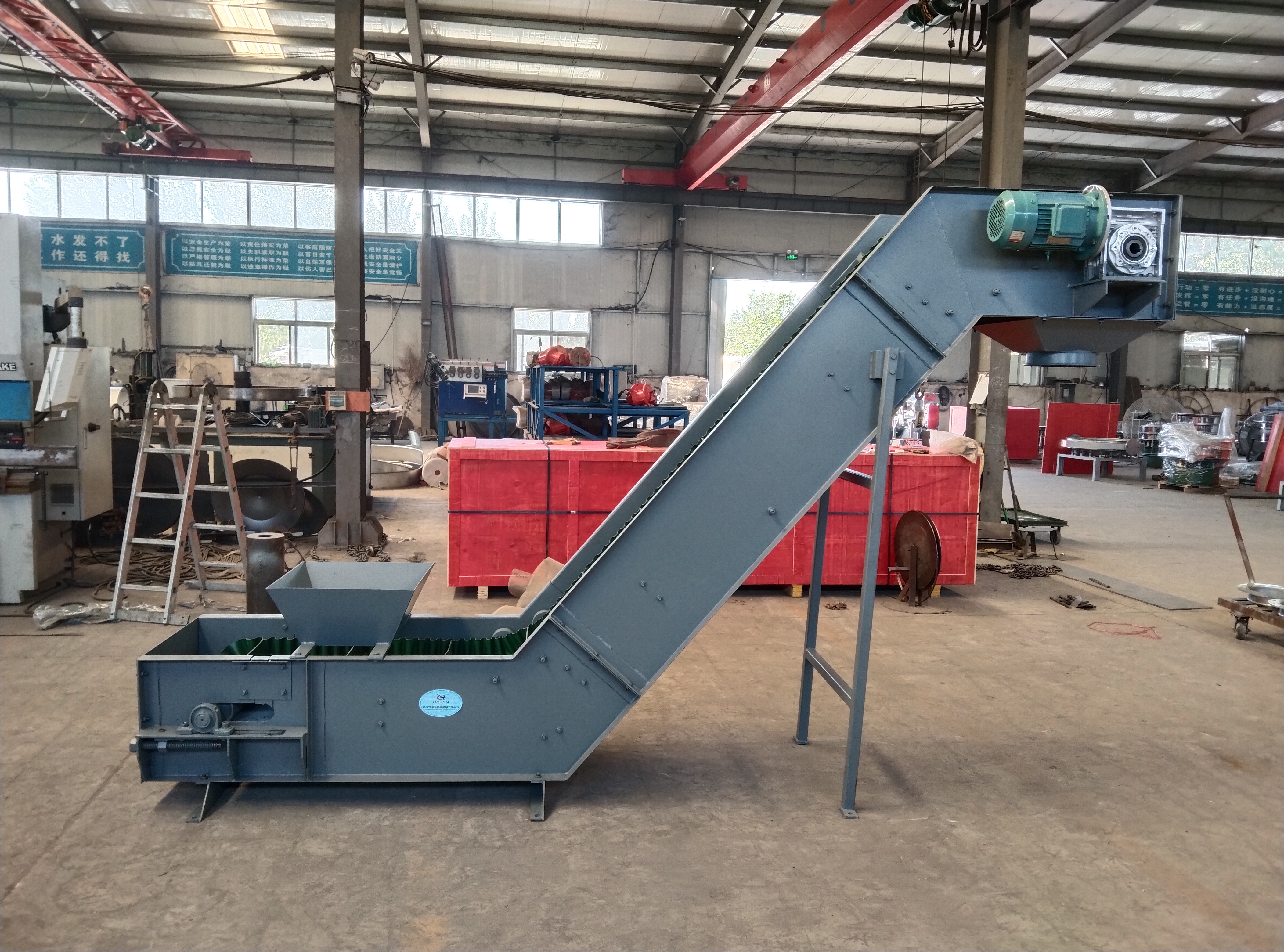
What is the principle of Waste Belt Conveyor for Plastic Bottle?
The working principle of Waste Belt Conveyor for Plastic Bottle is relatively simple. It mainly relies on a continuously running conveyor belt to carry and move plastic bottle waste. Specifically, its principle can be broken down into the following key points:
Drive system: The conveyor is usually driven by one or more motors, which drive the active roller to rotate through a reducer and a transmission device (such as a chain, gear or belt). The rotation of the active roller is the power source for the entire conveyor belt movement.
Conveyor belt: The conveyor belt is the main body of the material, usually made of rubber, PVC or other wear-resistant materials, with certain flexibility and strength. It surrounds the active roller and the driven roller to form a closed loop.
Carrying and moving: When the motor drives the active roller to rotate, the friction force causes the conveyor belt to move forward. Plastic bottle waste is placed on the conveyor belt, and as the conveyor belt moves, the waste is also transported from one point to another.
Support and guide: Under the conveyor belt, rollers or sliding plates are usually installed to support the conveyor belt to prevent it from sagging and ensure smooth operation of the conveyor belt. There may also be guide baffles on both sides to prevent the plastic bottle waste from falling from both sides of the conveyor belt.
Unloading: When the plastic bottle waste reaches the end of the conveyor belt, as the conveyor belt moves downward around the driven roller, the waste will be unloaded from the conveyor belt due to gravity or inertia and enter the subsequent recycling and processing equipment, such as balers, crushers, etc.
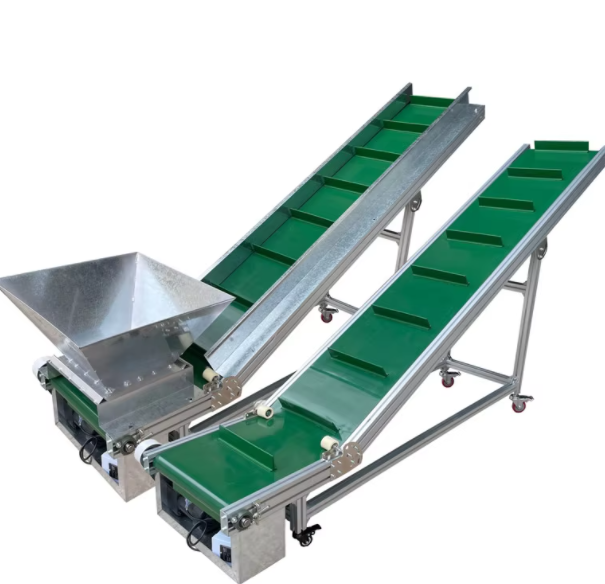
Basic parameters of Waste Belt Conveyor for Plastic Bottle
|
width (mm) |
Conveying length(m) power(kw) |
transfer speed (m/s) |
Delivery volume (t/h) |
||
| 400 |
≤10 3 |
12-15 3-4 |
15-30 4-7.5 |
1.25-2.0 | 30-60 |
| 500 |
≤10 3 |
12-15 4-5.5 |
15-30 5.5-7.5 |
1.25-2.0 | 40-80 |
| 650 |
≤10 4 |
12-15 7.5 |
15-30 7.5-11 |
1.25-2.0 | 80-120 |
| 800 |
≤10 4 |
12-15 7.5 |
15-30 7.5-15 |
1.25-2.0 | 120-200 |
| 1000 |
≤10 5.5 |
10-20 7.5-11 |
20-40 11-22 |
1.25-2.0 | 200-320 |
| 1200 |
≤10 7.5 |
10-20 7.5-15 |
20-40 15-30 |
1.25-2.0 | 290-480 |
| 1400 |
≤10 11 |
10-20 15-22 |
20-40 22-45 |
1.25-2.0 | 400-680 |
| 1600 |
≤10 15 |
10-20 22-30 |
20-50 30-75 |
1.25-2.0 | 600-1080 |
| 1800 |
≤10 18.5 |
10-20 30-45 |
20-50 45-110 |
1.0-2.0 | 800-1500 |
| 2000 |
≤10 22 |
10-20 45-55 |
20-50 55-132 |
1.0-2.0 | 1000-2000 |
| 2400 |
≤10 30 |
10-20 55-75 |
20-50 75-185 |
1.0-2.0 | 1500-3000 |
What are the advantages of Waste Belt Conveyor for Plastic Bottle?
Waste Belt Conveyor for Plastic Bottle has many advantages when dealing with specific materials such as waste plastic bottles, which makes it a common equipment in related processing processes. The following are the advantages of Waste Belt Conveyor for Plastic Bottle:
Adapt to irregular shaped materials: Plastic bottle waste has different and irregular shapes, which are not easy to be transported through pipes or some other conveying methods. Conveyor belts can smoothly carry and move these materials of different shapes without getting stuck or blocked.
Handling large-volume materials: Plastic bottle waste is usually large in volume but light in weight. With its relatively wide belt surface and side baffle design, the conveyor belt can carry and transport a large number of plastic bottles at one time, which is suitable for batch transfer.
Adaptability of spatial layout: The conveyor belt can be designed into a horizontal, inclined or combined (such as L-type, Z-type) layout according to the space limitations and process requirements on site. This flexibility allows the equipment to adapt to different height differences and transfer paths.
Support for subsequent process connection: The conveyor belt is usually placed at the front end of the crusher, baler, sorting platform or other processing equipment. It can provide stable and controlled feeding for downstream equipment to achieve the connection of material processing processes.
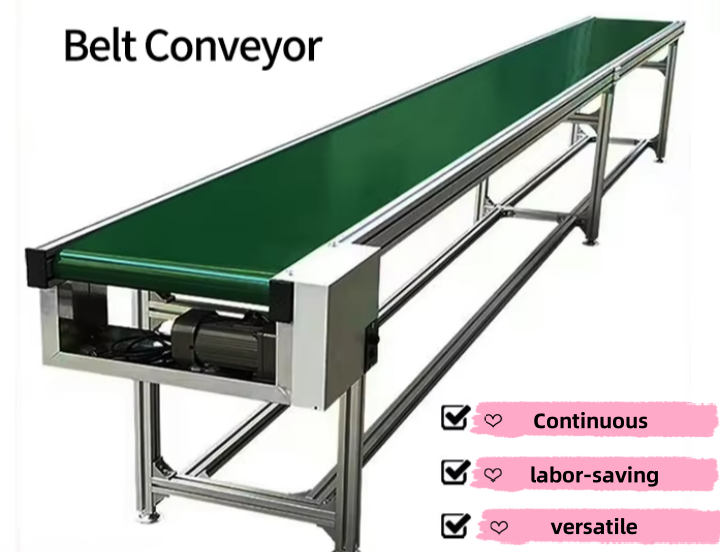
Structure of Waste Belt Conveyor for Plastic Bottle
The structure of Waste Belt Conveyor for Plastic Bottle is designed to stably convey plastic bottle waste. Although the specific models and manufacturers may vary, the core components are similar, mainly including the following aspects:
Conveyor belt: The conveyor belt is the core component for carrying and moving plastic bottle waste. It is usually made of wear-resistant and corrosion-resistant materials, such as PVC, rubber or PU. According to actual needs, the surface of the conveyor belt may be designed with anti-skid patterns or lifting ribs to prevent the waste from slipping or rolling.
Drive device: The drive device is the part that provides power for the conveyor belt to operate, and is mainly composed of the following components: motor, reducer and transmission roller.
Frame: The frame is the supporting structure of the conveyor, usually welded from steel (such as channel steel, square tube), with sufficient strength and stability to support the weight of the conveyor belt, roller, drive device and the plastic bottle waste carried. The design of the frame will take into account the length, width and height of the conveyor.
Tensioner: The tensioner is used to adjust the tension of the conveyor belt to ensure that the conveyor belt does not loosen and slip or is too tight and damaged. Common tensioning methods include spiral tensioning, weight tensioning or hydraulic tensioning.
Feed and discharge ports: Depending on the actual application, the conveyor may be equipped with a feed port (or hopper) to facilitate the introduction of plastic bottle waste into the conveyor belt. The discharge port (or chute) guides the waste to be unloaded from the conveyor belt and enter the next processing link.
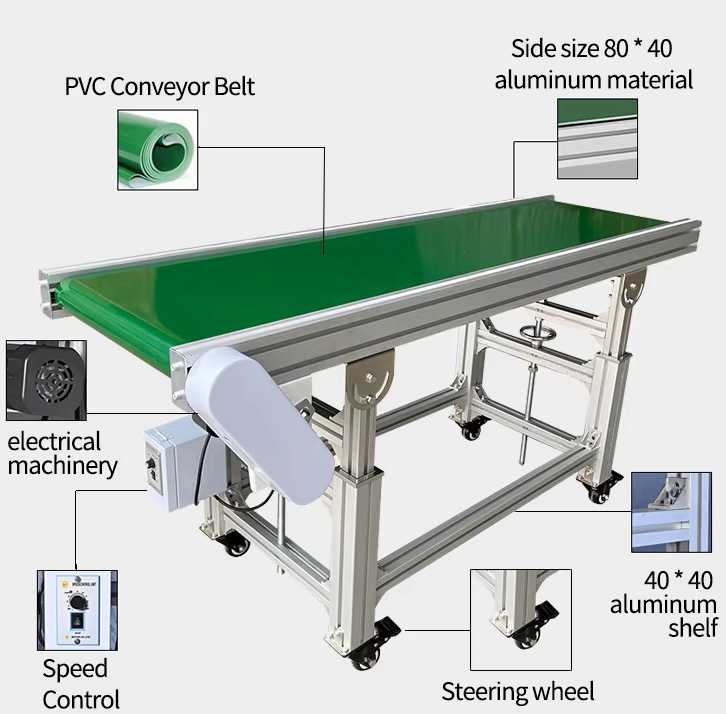
What are the application scenarios of Waste Belt Conveyor for Plastic Bottle?
Waste Belt Conveyor for Plastic Bottle is mainly used to handle the transfer and transportation of large quantities of waste plastic bottles. Its application scenarios generally revolve around the need to physically move and initially process these materials.
The main function of the horizontal conveyor belt is to move materials on the same height plane. This conveyor belt is usually located at the starting position of the sorting line, spreading the scattered plastic bottle waste evenly, facilitating the preliminary identification and classification of manual or automated equipment.
Inclined conveyor belts can lift plastic bottle waste on the ground to a higher storage facility, such as a high-level silo, to facilitate subsequent processing or treatment. Similarly, when sending waste to a crusher or baler, if the feed inlet of these equipment is higher than the ground, an inclined conveyor belt is an indispensable connection tool. Its applications also include working areas across different heights, such as conveying waste from the first floor to the second floor to adapt to the production layout of multi-story factories.
L-type / Z-type / combined conveyor belts can flexibly change the conveying direction and height of plastic bottle waste in a limited space. For example, it can first convey the waste horizontally for a distance, then lift it vertically, and then turn it horizontally to the next processing point. This design enables the waste processing line to adapt to various complex workshop layouts, ensuring smooth and continuous material flow, and can operate effectively even in non-linear or multi-level environments.
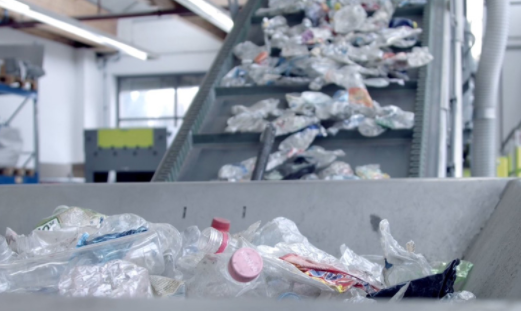
As a key equipment at the end of the production line, the stable operation of Waste Belt Conveyor for Plastic Bottle is directly related to the continuity of the waste processing process. The equipment realizes the adaptation of plastic bottles of different specifications through modular design. The combined application of wear-resistant materials and anti-slip textures on the conveyor belt surface effectively reduces the risk of material accumulation and jamming. In daily maintenance, regular inspection of the lubrication status of the transmission components and the belt tension can ensure that the equipment maintains a low failure rate during 12 hours of continuous operation.
